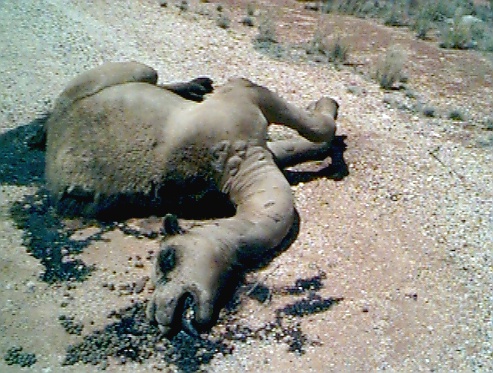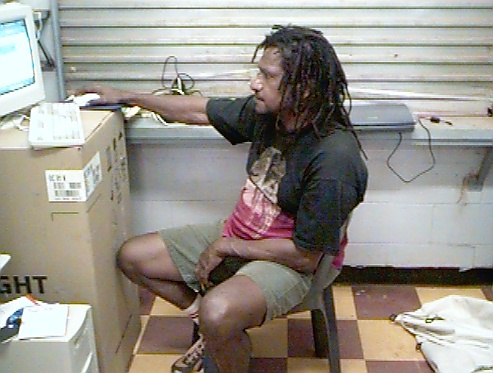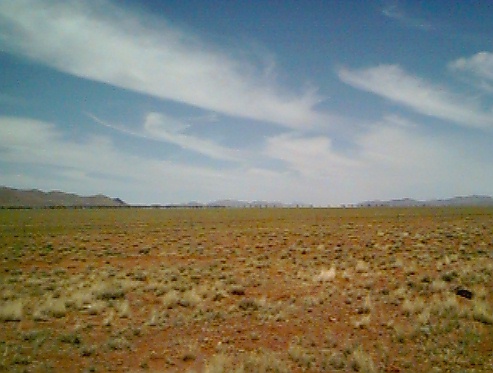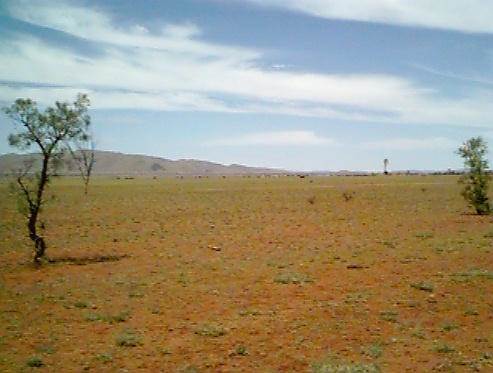
Outback Digital Network ODN
http://www/odn.net.au
Summary
The Outback Digital Network - ODN - seeks to link Indigenous communities across northern Australia. The ODN during 1998 undertook a feasibility study to determine if a federated series of Indigenous managed and administered regional communications networks were viable. Viable meaning operated as a business; as a reliable communications network(s); as a sustainable activity at the community, regional and federal levels; as delivering services and products to remote Indigenous communities and remote communities generally.

Perry Morrison, Top End Manager of ODN and virtual member of the Odyssey 2000 workshop provided this overview
Under the $200,000 allocated to the ODN by the RTIF a management structure was established to facilitate the ODN’s many planned tasks and phases. This was done to prove our ability to operate through a "thin" national structure and strong regional/ community model to produce results and be accountable. It is working.
The regional have conducted an IT&T audit, needs analysis, and market and cultural awareness to their respective communities (more than a 100 at last count) based on individual community ownership and regional management of the process. The ODN encourages the indigenous people at the community and regional levels to "own" the process. The ODN’s federated regional organisations have taken the opportunity as a clean start; not wanting to use existing structures or layered bureaucracy.

In this process, the ODN has acted as a "backstop" to the regional bodies. BAMA has looked to the ODN to advance its Kimberley.net RTIF project and Balkanu have actively sought ODN support for its Cape York Digital Network (CYDN) RTIF project
The ODN has evolved as a project since its initial submission to the RTIF. The original four founding member organisations of the ODN (BAMA, Tanami Network, Balkanu and TEABBA) has been expanded to include the Tennant Creek Regional Infrastructure Project (TRIP), a former standalone RTIF project . Currently discussions are underway with the Ngaanyatjarra Council and the Anangu Pitjantjatara Council to come under the ODN "umbrella" extending the ODN into the south of Western Australia and northern South Australia.
The ODN will need to keep evolving as events "on-the-ground’ determine what is do-able and as Indigenous people take position(s) on digital communications. The ODN TaskForce at their strategic meeting on Melville Island in August 1998, determined that Indigenous ownership of the communications infrastructure was not an absolute necessity thus clearing the way to begin joint venture discussions with telecommunications carrier companies and vendors. But they also decided that training and education were "non-negotiable" and had to be part of any communications roll-out.

The ODN sees linking remote Indigenous communities as an undertaking where technology is only part of the solution. Approximately $15 million dollars has been set aside by the RTIF over the next two years based on achieving a series of "milestones" at community, regional and federal levels to release on-going funds to the ODN.
We see communications and digital technology as being the providence of the commercial carriers, businesses and vendors and as such want to enter into business agreements with them. However, the ODN sees services into the communities and regions as being determined by the communities and the regional organisations. Finally, the ODN sees communications roll-out into northern Australia as a staggered process with regions and communities working through their respective milestones to communications roll-out and the development of community and enterprise activities.
Overview
(a) Technology is a step in the solution.
Before the roll-out of any communications hardware can take place the ground work must be done. Any communications roll-out should be left to the companies and carriers that do these operations as a normal function of their businesses. After roll-out, there needs to be on-going support and evaluation to keep the solution viable and dynamic.

(b) Hard and soft infrastructure
Any hard infrastructure meaning any communications equipment roll-out must be supported by soft infrastructure meaning that businesses, and organisations servicing the communities at local, state and federal levels need to understand the technology and adapt their processes to realise the potential of the communications links. Those receiving the services need to be equally aware, involved and skilled-up. Communications is a two-way technology, process and market. Remote Indigenous communities are an unique communications area that needs to interface into all markets.
(c) No one gets the picture first time around.
Businesses in the urban centres are working to get a handle on the digital communications options available having access to resources, information and expertise. Their respective journeys along this path are a series evolving of steps.

In the bush, where people are stretched by the distances, availability and demands placed upon them, or where information and help is not immediate, a supported, recognisable process with sustainable milestones needs to be established. This is to get communities and organisations up to speed on what is on offer and to modify the digital corporate solutions particular to the indigenous environment to overcome the gaps and challenges in remote Australia.
(d) Community involvement is essential
Only widespread community involvement will ensure the adequate utilisation and protection of any communications hardware installed in communities. The communities must own the process. A single person in the community being responsible for any communications link is a flaw in the system. If that person moves away, or doesn’t want to be involved, then the whole community simply does without.
(e) Every community and region is different
Every community is different and as such needs to be case managed. Every region across northern Australia presents its own set of requirements and situations.
(f) Not everyone needs to own a racing car.
It is counterproductive to supply communities who have never had reliable phone links (or no phone links) advanced services such as videoconferencing. It is equally limited to deny those communities who are, arguably, further along the communications path with enhanced services even if that means only upgrading to fax services. There should be no "racing" towards the implementation of fully enhanced communications services simply to arrive at a completion date unless the community needs, demands and skills warrant it.
(g) Re-current costs
The determining factor for viability and sustainability of any communications solution is its recurrent costs. Recurrent costs include maintenance, support, upgrades and replacements, servicing, tariffs on telecommunications products and services such as ISDN or satellite time, billing and network management.
The ODN management, administration and training.
The effective use of any communications infrastructure is reliant upon the structures that support it and the structures that it services. If a community struggles with issues such as power supply or access to training, it will struggle with the introduction of any new communications gear. If the regional body or organisation which has the administrative and management responsibilities for their respective communities is not organised, accountable, and reliable, then any introduction of NEW technology will be doubly difficult.
The ODN is along in discussions with Optus, Hughes, AAPT, SUN, Microsoft, Intel Nortel Kodak, and others, concerning JV (joint venture) agreements for the supplying, building, running and maintenance of the ODN network. The ability of the ODN to cover its capital investments through RTIF money means that the corporate and business sectors can see their cases made in business, marketing and technology for buy-in or involvement. This also means that the risk to the government is spread across organisations and suppliers.
The ODN’s expected outcomes
(i) to manage the end users services and products of the network.
(ii) to use its leverage to strike agreements and to attract business by carriers, multi-nationals, corporate, businesses, government, organisations and markets via the ODN for and to the Indigenous communities
(iii) to facilitate corporate buy-in to on-going training.
(iv) to create real jobs.
(v) to provide communications infrastructure to remote northern Australia (some communities don’t have a basic phone connection).
(vi) to facilitate the roll-out of better health, education and information services to remote communities.
(vii) to recover the re-current costs of the network by generation of communications traffic usage by individuals, organisations, businesses and government at the local, state and federal levels.
(viii) to establish the Aboriginal position in the digital age. The ODN has created its own website at http://www.odn.net.au to act as the online gateway to and for Aborigines and Aboriginal affairs.

The Regional Organisations/Communities
Broome Aboriginal Media Association (BAMA)
Tanami Network Pty Ltd
Tennant Creek Regional Infrastructure Project (TRIP)
Top End Aboriginal Bush Broadcasting Association (TEABBA)
Balkanu Cape York Land Development Corporation
The ODN utilised the above regional organisations in consulting directly into Indigenous communities for its needs analysis, audit and awareness program.
Including major communities from the Anangu Pitjantjatara Council and the Ngaanyatjarra Council; the ODN would be involved through its regional organisations with 120 major Indigenous communities across the three states of Western Australia, South Australia and Queensland and the Northern Territory .
The actual total number of communities involved with the ODN is closer to 200 considering many of the major communities have numerous "outstations" surrounding these centres. For example, TRIP facilitated five major community surveys but also performed some communications consultation work into another 43 smaller communities and outstations which comprise the TRIP region.
The ODN and the Regions
The relationships between the ODN and the Regional bodies were formalised through a series of Memoranda of Understanding with the respective organisations before community consultations and field work began.
The regional organisations conducted an IT&T audit, needs analysis, and market and cultural awareness to their respective communities based on individual community ownership and regional management by conducting:
This created an unique information database, raised community and regional awareness to communications and gained national exposure for the ODN both in the corporate and public sense.

The Project Approval
In early December 1998 the RTIF announced
Applicant: Outback Digital Network Taskforce
Funding: $2.9 million
Location: 100 - 200 communities in WA, NT and Queensland
Description: The project aims to develop a federated series of Indigenous managed, regional communications networks that will make a range of communications services available to over 100 communities in the Kimberley/Pilbara, Tennant Creek, Tanami, Top End (NT) and Cape York regions of northern Australia.
The funding will provide for the first stage of the project's implementation, involving the establishment of a national office and regional administrative structures, as well as the development of business plans and technical network designs for each regional network.
The ODN is seen as a vehicle through which regional organisations can operate autonomously while banding together to achieve the economies of scale necessary to maintain a strong position in a very competitive and changing telecommunications market.
By maintaining Aboriginal ownership we hope to continue to assist Government and commercial service providers to gain new efficiencies in their operations in remote Australia, while at the same time ensuring that the community perspective is not lost in the process.
ODN has now been allocated $15M in set aside funding to implement its project plan. Discussions with a number of telecommunications carriers are now being finalised and the first sites rolled out before the Northern wet season.